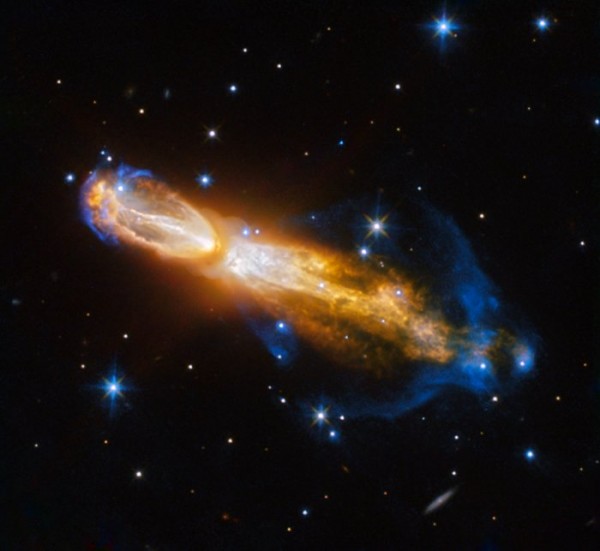By Ana Verayo, | February 05, 2017

The Calabash Nebula, pictured here — which has the technical name OH 231.8+04.2 — is a spectacular example of the death of a low-mass star like the Sun. (ESA/Hubble & NASA)
Astronomers have revealed one of the most unique nebulae in the cosmos known as the Calabash Nebula, which is located 5,000 light years away from Earth in the Puppis constellation.
This nebula is so distinct that astronomers call it the "Rotten Egg Nebula." It was recently imaged by the Hubble Space Telescope.
Like Us on Facebook
According to astronomers from the European Space Agency, this image reveals a star undergoing a very rapid transformation, specifically from a red giant star to a planetary nebula. It is now blowing outer layers of cosmic gas and dust into the surrounding environment.
ESA officials explain that this newly ejected stellar material is emitted in various directions in very high speeds. Gas indicated in yellow means that this region is moving at incredible velocities of one million kilometers per hour.
Astronomers dubbed this cosmic event "Rotten Egg Nebula" due to its high sulfur content. This also means that if we could take a whiff out this nebula, it would stink like rotten eggs.
In this new image, the dying star is seen in the process of transforming into a planetary nebula. However, this does not mean that it is turning into a planet or emitting the last flickering light of a dying star. In fact, the opposite of this is what makes nebulae one of the most dynamic structures in the universe.
ESA scientists say that this image is so rare since they have never captured a cosmic explosion of this magnitude. In the next thousand of years, the Rotten Egg Nebula is expected to evolve into a full planetary nebula.
Our Sun also awaits the same fate. About five billion years from now, our star will run out of fuel and could shed its multiple layers of gas. The sun will be surrounded by different kinds of escaping gas which will be absorbed by the universe.
-
Use of Coronavirus Pandemic Drones Raises Privacy Concerns: Drones Spread Fear, Local Officials Say

-
Coronavirus Hampers The Delivery Of Lockheed Martin F-35 Stealth Fighters For 2020

-
Instagram Speeds Up Plans to Add Account Memorialization Feature Due to COVID-19 Deaths

-
NASA: Perseverance Plans to Bring 'Mars Rock' to Earth in 2031

-
600 Dead And 3,000 In The Hospital as Iranians Believed Drinking High-Concentrations of Alcohol Can Cure The Coronavirus

-
600 Dead And 3,000 In The Hospital as Iranians Believed Drinking High-Concentrations of Alcohol Can Cure The Coronavirus

-
COVID-19: Doctors, Nurses Use Virtual Reality to Learn New Skills in Treating Coronavirus Patients







